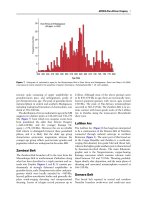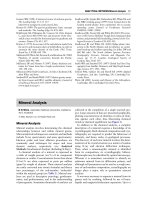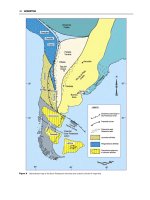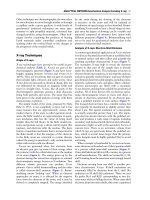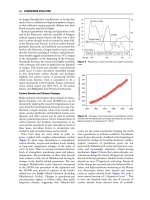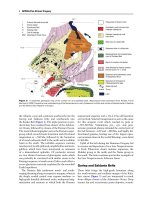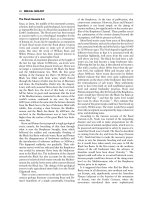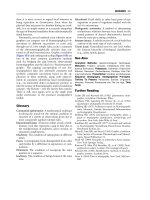Encyclopedia of geology, five volume set, volume 1 5 (encyclopedia of geology series) ( PDFDrive ) 2600
Bạn đang xem bản rút gọn của tài liệu. Xem và tải ngay bản đầy đủ của tài liệu tại đây (67.3 KB, 1 trang )
SEDIMENTARY ROCKS/Clays and Their Diagenesis 63
Figure 1 Change in percentage of calcite, quartz, K feldspar, illite, kaolinite, and chlorite with depth. Adapted from Hower J, Eslinger
EV, Hower ME, and Perry EA (1976) Mechanism of burial metamorphism of argillaceous sediments: 1: Mineralogical and chemical
evidence. Geological Society of America Bulletin 87: 725 737.
kaolinite or chlorite to be the predominant clay, special
conditions are required, whilst the preservation of
smectite at depth requires the inhibition of diagenesis,
usually through overpressuring.
Illitization of Smectite
The most studied and first recognized aspect of
clay diagenesis is the illitization of smectite with
increasing depth. This has been most intensively studied in the Gulf Coast region of the USA, where Tertiary smectite-rich argillaceous sediments have
undergone progressive burial. With increasing depth
(i.e., increasing temperature), K feldspar, kaolinite,
and smectite decrease, whilst illite and chlorite increase. In its simplest form, this reaction can be
written as the dissolution of K feldspar to yield Al3ỵ
and Kỵ, which react with smectite to form illite
smectite and ultimately illite:
smectite ỵ Al3ỵ ỵ Kỵ ! illite ỵ Si4ỵ ỵ Fe2ỵ
ỵ Naỵ ỵ Mg2ỵ
or
smectite ỵ Kỵ ! illite ỵ Si4ỵ ỵ Fe2ỵ ỵ Naỵ ỵ Mg2ỵ
The second reaction conserves aluminium and requires the dissolution of some smectite. The rock
evidence suggests that both reactions are possible.
K feldspar may also react with kaolinite to form illite.
It is widely claimed that the Kỵ for these reactions is a
